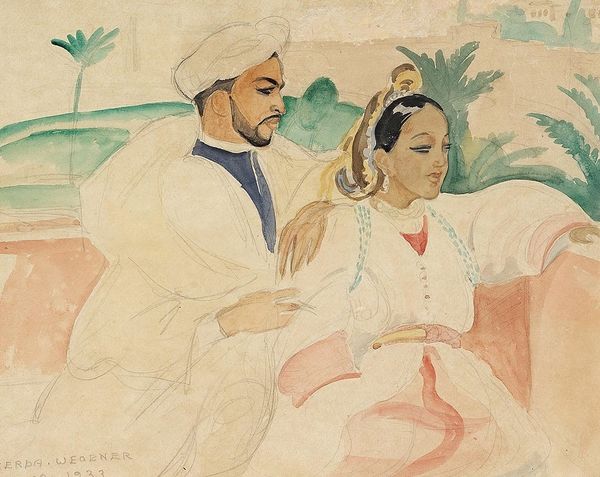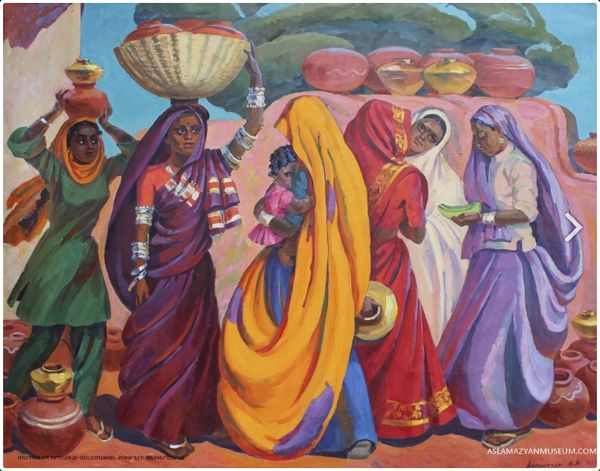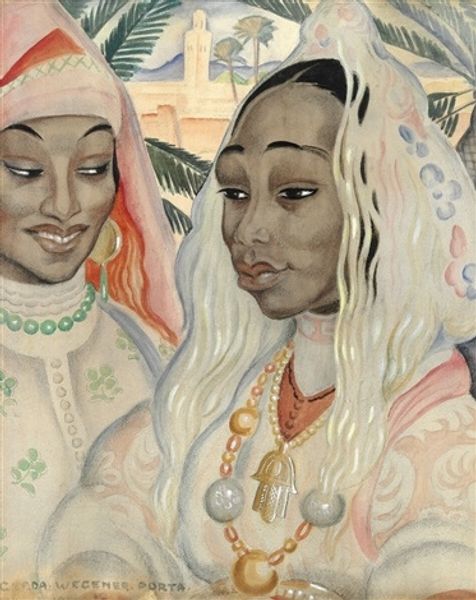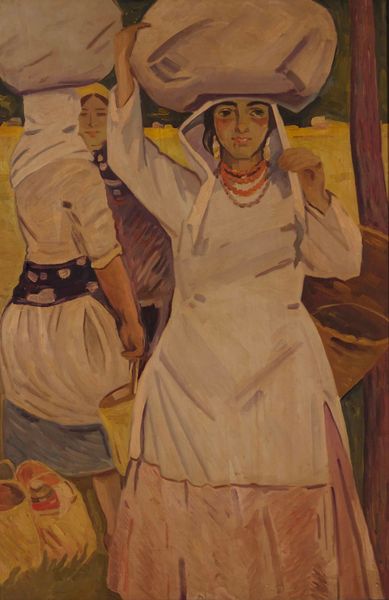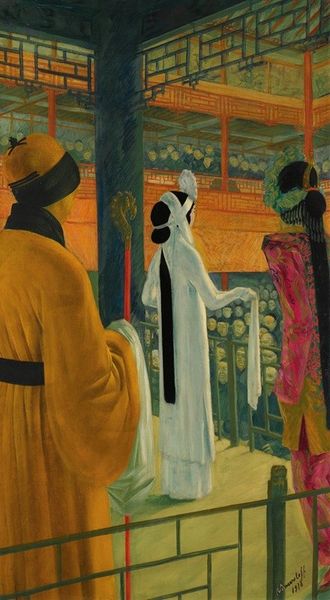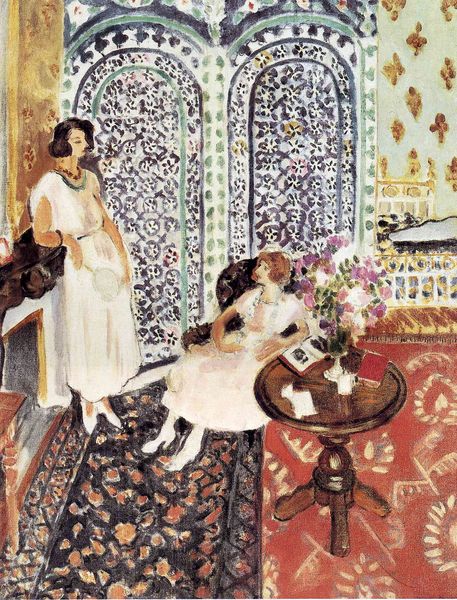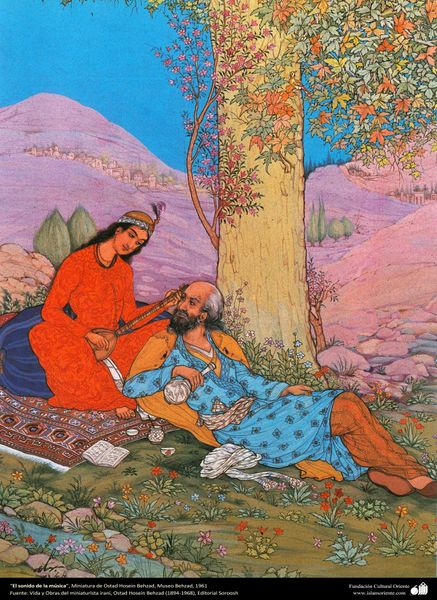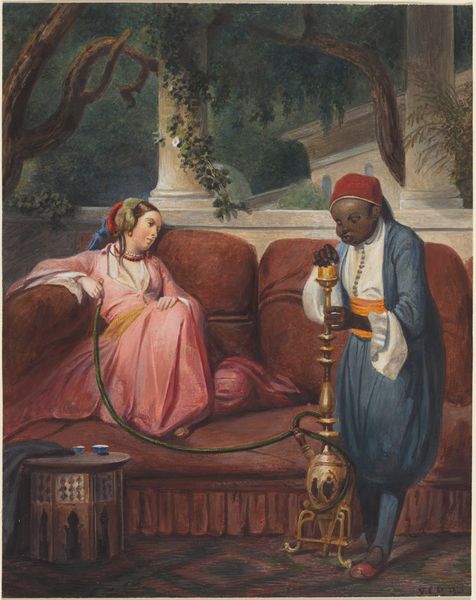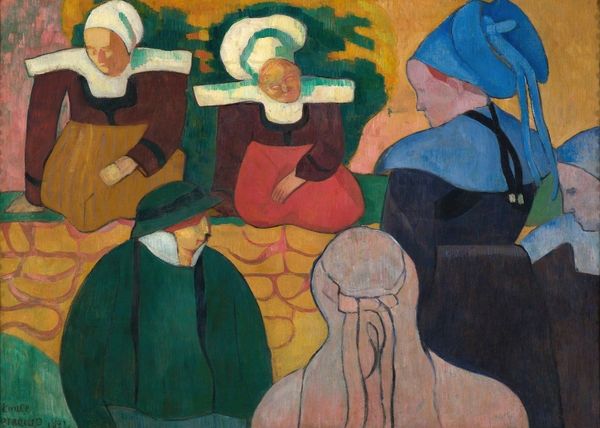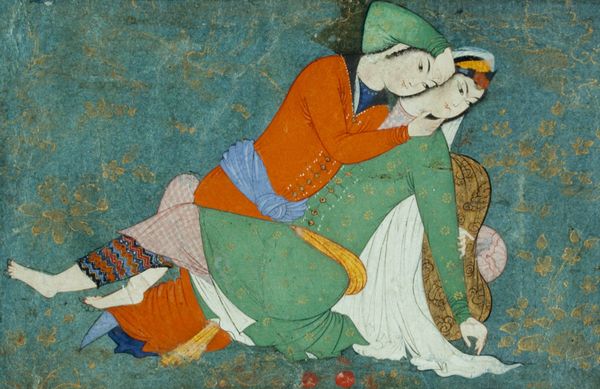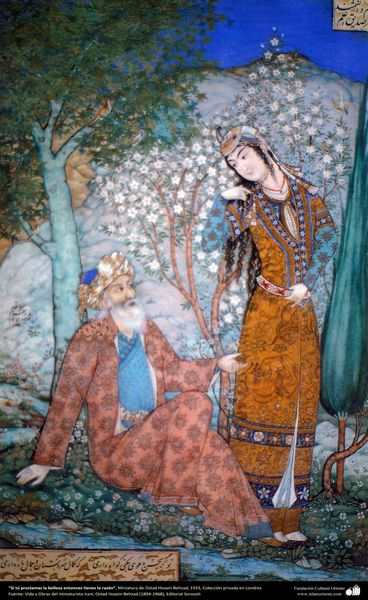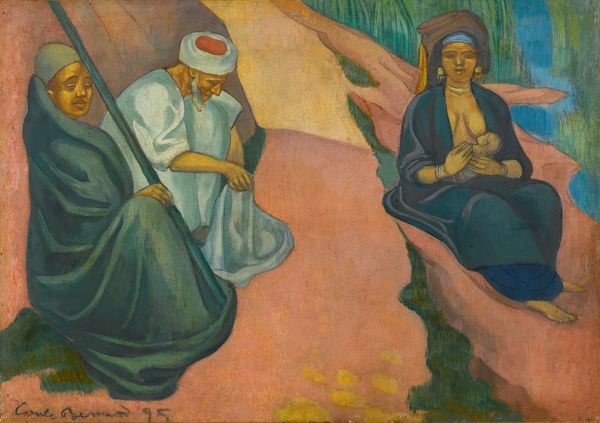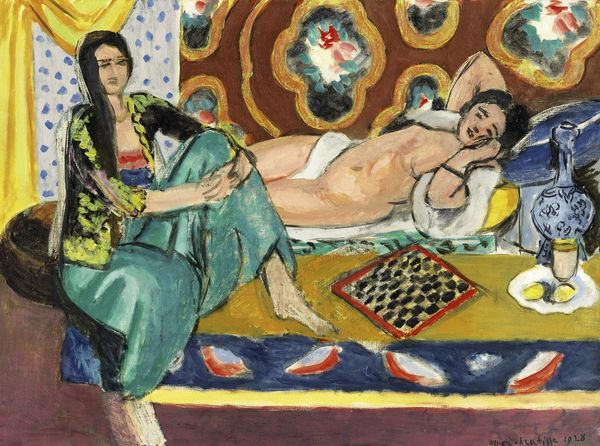
watercolor
#
portrait
#
watercolor
#
orientalism
#
portrait art
#
watercolor
Copyright: Public domain
Curator: Gerda Wegener's "Moroccan Newlyweds (Aicha and Djialli)," painted in 1934. The medium used seems to be watercolor, giving it a delicate yet vibrant quality. Editor: It strikes me as both romantic and a little melancholic, almost like a still from an old film. The pastel tones and soft light really capture a particular mood. Curator: Wegener was a Danish artist working during the Art Deco period, and she travelled extensively. What can we glean about artistic exchange when European artists adopt and, let's be frank, market aesthetics from different cultures? Editor: That's the key question, isn't it? This work falls into the Orientalist tradition. We have to consider the power dynamics inherent in representing another culture through a European lens, and how this contributes to larger historical narratives and prejudices. This particular style gained traction partly because institutions, critics, and audiences back home readily consumed and legitimized the view of exotic, foreign lands. Curator: Agreed, but I also look at the very act of creation: watercolor itself, the pigments chosen. Were they locally sourced materials during her time in Morocco? The layering suggests a deliberate, meticulous process of applying colour, building up depth, considering both her experience and material conditions of her making art. This makes us also reflect on the position and role of the artist in that society, what would her impact have been? Editor: Absolutely. The reception of the painting in its time—and even today—hinges on understanding its socio-political context. It's important to consider whether its display, in any setting, reinforces stereotypes, exoticizes other cultures, or fosters genuine cross-cultural dialogue. This, to me, makes a difference on the way it gets appraised. Curator: For me, thinking about the supplies, Wegener’s studio, the journey these objects take really brings the moment and place to life. And the subtle blending of color reminds that a deep exploration of materiality in art expands our comprehension. Editor: Ultimately, looking at Wegener's work reminds us that art is never created in a vacuum. By investigating both the image and context it provides insight into art history itself.
Comments
No comments
Be the first to comment and join the conversation on the ultimate creative platform.
